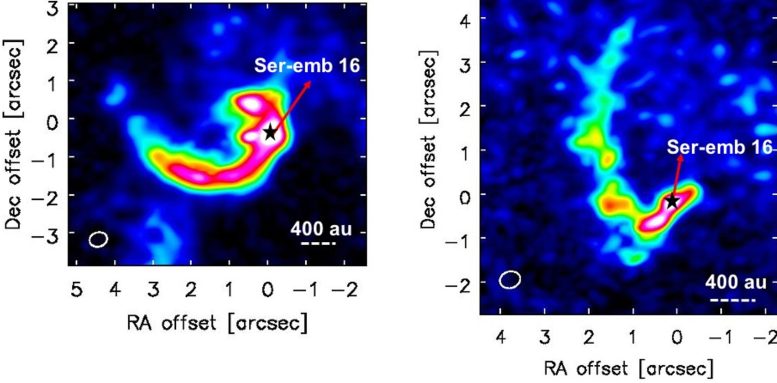Chaotic birth of brown dwarfs revealed
- April 16, 2024
- 0
New observations help us understand whether the birth of giant planets occurs in a similar way to the birth of stars. The birth of stars is a chaotic
New observations help us understand whether the birth of giant planets occurs in a similar way to the birth of stars. The birth of stars is a chaotic

New observations help us understand whether the birth of giant planets occurs in a similar way to the birth of stars. The birth of stars is a chaotic and dynamic process, especially in the early stage, characterized by complex gas structures in the form of spirals and ribbons. Such structures are called “feeder filaments” because they feed gaseous material from the environment to the newborn star, similar to cosmic umbilical cords.
Brown dwarfs are celestial bodies with a mass of less than one-tenth the mass of the Sun. This makes them too small to undergo nuclear fusion and shine like stars. Until now, scientists didn’t know whether brown dwarfs form as sun-like stars. Confirmation of this hypothesis requires highly sensitive and angular observations of brown dwarfs during the early stages of their formation.
LMU astrophysicist Dr. from the University of Munich Observatory. An international team led by Basma Riaz did just that: Researchers observed the extremely young brown dwarf Ser-emb 16 with the high-tech ALMA observatory in Chile and recently published their results. results in the magazine Monthly Notices of the Royal Astronomical Society.

“Our observations reveal impressive large-scale spiral and ribbon structures never before seen in a newborn brown dwarf,” says Riaz. The filaments cover a huge area of approximately 2000-3000 AU and are bound to Ser-emb 16. Clumps of material that could potentially become young brown dwarfs have also been seen around it. “These observations show for the first time the influence of the external environment, leading to asymmetric mass accretion by filament feeding of a brown dwarf,” says the astronomer.
Spiral structures and stripes provide important clues about how brown dwarfs form. After simulating possible scenarios, the researchers compared them with data from the ALMA observatory. Large structures can be explained, for example, by the collision of collapsing clusters in the star-forming region. For this to happen, such collisions must occur at least once during the lifetime of star-forming nuclei.
“With the help of new numerical simulations, we show that collisions cause even small clusters to collapse to form brown dwarfs. Spirals and ribbons of different sizes and morphologies are formed by collisions that occur laterally rather than head-on,” says co-author Dr. Dimitris Stamatellos.
If this model is correct, it suggests a dynamic process of brown dwarf formation, similar to that of Sun-like stars, in which chaotic interactions in the star formation environment are common from early ages.
In another scenario, simulations showed that the observed structures correspond to a large (pseudo) disk around a very young brown dwarf, where the (pseudo) disk is twisted by the rotation of the brown dwarf core in the presence of a strong magnetic field. . If this model is correct, it means that the magnetic field plays an important role in the formation process of the brown dwarf.
“Our ALMA observations provide a unique insight into the early stages of brown dwarf formation,” says Riaz. Comparison of observations with models supports the gravitational fall scenario, which can explain the observed asymmetric mass accumulation in the form of spirals and ribbons around forming stars. “Ser-emb 16 thus represents a unique example of a brown dwarf caught in a star-like formation process,” explains Professor Masahiro Machida of Kyushu University in Japan, one of the study’s authors.
Source: Port Altele
As an experienced journalist and author, Mary has been reporting on the latest news and trends for over 5 years. With a passion for uncovering the stories behind the headlines, Mary has earned a reputation as a trusted voice in the world of journalism. Her writing style is insightful, engaging and thought-provoking, as she takes a deep dive into the most pressing issues of our time.